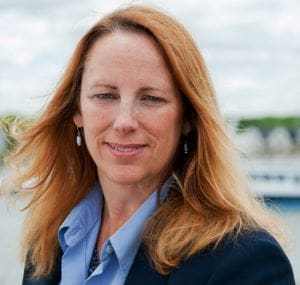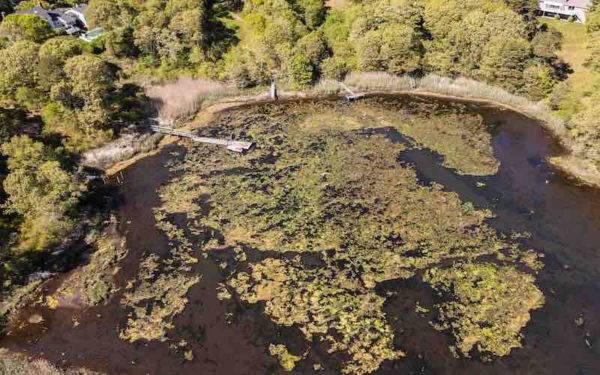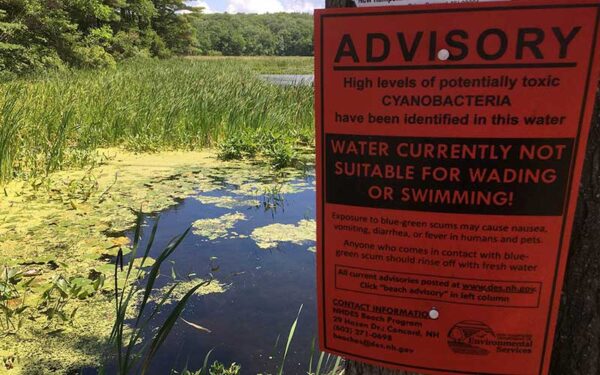 Mindi Messmer represents the Seacoast towns of Rye and New Castle in New Hampshire’s House of Representatives. She has been an environmental consultant for 25 years, working with businesses, banks, and the U.S. government on the presence of environmental contaminants. This blog was originally published as an article in Less Cancer Journal.
Mindi Messmer represents the Seacoast towns of Rye and New Castle in New Hampshire’s House of Representatives. She has been an environmental consultant for 25 years, working with businesses, banks, and the U.S. government on the presence of environmental contaminants. This blog was originally published as an article in Less Cancer Journal.
I am a State Representative in New Hampshire’s House of Representatives. As such, I receive $100 per year, a state license plate, mileage reimbursement (for days when I attend committee or House sessions), and an EzPass to cover my tolls.
Recently, I decided to spend the $200 (and then some) earned from my two-year term on lab testing for surface water samples from brooks that originate next to Coakley Landfill Superfund Site in Greenland, New Hampshire. I also worked to get others to donate money, now totaling $2,500, to sample three locations in Berry’s Brook, Bailey’s Brook, and Little River. Conservation Law Foundation helped me by accepting the donations and conducting the sampling with no labor cost.
Why did I do this? Because the State of New Hampshire Department of Environmental Services refused to do it themselves or compel Coakley Landfill Group (the responsible party) to do it after repeated requests.
Danger Hidden in Plain Site
Berry’s Brook flows through Greenland, Rye, and Portsmouth and eventually feeds into Odiorne Point in Little Harbor and the Piscataqua River. Berry’s Brook is listed as a Category 5 surface water body by the Environmental Protection Agency, which means that it is impaired or threatened for one or more designated uses due to pollution.
Very high levels of perfluorinated chemicals (PFCs) – which have been linked to kidney and testicular cancer, high cholesterol, thyroid disorders, and hypertension in pregnant women – were found in the samples collected from Berry’s Brook. In fact, one PFC, perfluorononanoic acid, or PFNA, was found at the third highest concentration ever detected anywhere in the world to date. PFNA has recently been singled out by the New Jersey Water Quality Institute for its toxic effects in humans and they have issued a separate, proposed, drinking water standard for it.
About a month after these samples were tested, the Department of Environmental Services collected samples from five locations in Berry’s Brook, several of which were the same sampled by Conservation Law Foundation. Even higher concentrations of toxic PFCs were found in these samples.
No Public Warnings and No Action are Not Acceptable
One warm winter day I happened to visit near Coakley Landfill. The Pan Am rail bed located on the west edge of the landfill was flooded with contaminated surface water that flows down the rail bed like a stream. I saw a young boy playing in the stream with his dad. This father had no idea he and his son were playing in toxic waters. People regularly run, take their dogs, and ride bikes on the rail bed – with no knowledge of the danger posed by the contamination there.
But that danger is well known to scientists and the state. Studies show that another PFC present on the site, perfluorooctanesulfonic acid (PFOS), concentrates in fish tissue. In Michigan, the state issues a do not eat advisory when surface water concentrations there are two orders of magnitude lower than what was detected in Berry’s Brook.
What has happened since the test results were received by New Hampshire’s Department of Environmental Services? Nothing. No warning about children playing in Berry’s Brook or people eating fish taken from the brook. Not a peep.
Guess I must pull my wallet out again and have some bake sales.
Check back for the next blog from Rep. Messmer about her work to clean up toxins in our Seacoast waters.




